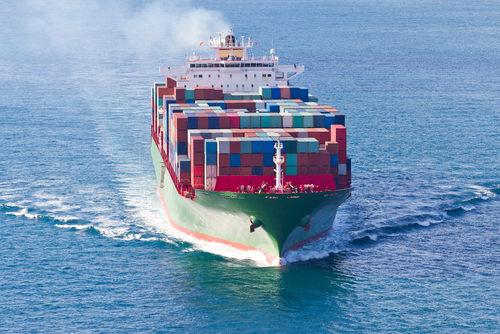Important Global Trade Trends for 2015

Please note that we are not authorised to provide any investment advice. The content on this page is for information purposes only.
2015 has been designated the International Year of Light and the International Year of Soils by the United Nations. Marsala is the official pantone color of the year. On the Chinese calendar, 2015 is the year of the goat. What will 2015 mean for the world of global trade and supply chain? Here are four trends to watch:
2015 has been designated the International Year of Light and the International Year of Soils by the United Nations. Marsala is the official pantone color of the year. On the Chinese calendar, 2015 is the year of the goat. What will 2015 mean for the world of global trade and supply chain? Here are four trends to watch:
Table of Contents
Cheap Oil Drives Growth
After several years of being squeezed by higher oil costs, manufacturers and consumers will benefit from a recent drop in oil prices. Excess supply, driven in part by new technologies and techniques in the oil supply business, have resulted in a significant drop in oil prices. Lower energy costs are expected to have a direct impact on overall US growth.
The Wall Street Journal recently pointed out that the International Monetary Fund raised its 2015 forecast for U.S. growth to 3.5% from 3.1% in part because of lower energy costs. For manufacturers this provides a significant boost by lowering transportation and production costs. It’s a particular benefit for energy intensive industries and will be a significant driver of the re-shoring of certain manufacturing back to the U.S.A. For consumers, the drop in prices at the pump increases the cash they have in their wallets. Research group IHS Global Insights suggests that the average U.S. household will have an extra $750 and its pockets over the next year due to the drop in oil prices. Retailers are optimistic that extra cash in hand will result in more spending in 2015.
Sustainability Programs Get Creative
Now that business has realized that ethical sourcing and sustainability is not just the ideal of the “crunchy granola set” but the driver of real long-term growth and profitability, it is beginning to be approached in more creative ways. One of those ways is to link financing rates to sustainability efforts. One program offered by the IFC, the private arm of the World Bank, finances factories in the developing world at rates much lower than market if they pass social and sustainability audits. This is good for the factories and good for the companies that source from those factories. Industry groups and coalitions, such as those in the apparel and retail industries that are built around safety and sustainability, will continue to push this along in 2015.
Cash Plays a Bigger Role in Supply Chain
Another interesting development that’s driving cash into supply chain is the recent movement by banks to encourage their large customers to remove cash deposits. Banks say new regulations are making it too costly for them to hold certain deposits. Many are threatening fees on accounts that had previously been free for large customers. This leaves companies searching for alternative places to park their cash, and companies have record quantities of the green stuff. In 2015, a growing number of companies will turn to supply chain as a place to not only hold cash but to get a healthy return on it. Self-funded early payment programs, for example, will become an increasingly attractive alternative to getting dinged by banks. In these programs, excess cash is put to use in the supply chain to essentially finance a company’s own transactions while assisting suppliers in obtaining low cost capital needed to fulfill their orders.
Fast Gets Faster
Change is happening a lot faster than we realize. Technology, and its ability to connect people, share information and make it actionable, is changing the world faster than we ever imagined possible. This will only intensify in 2015. Businesses will need to continue to invest in ways to get smarter, faster and more accurate to better serve their customers. This becomes a double-edged sword in the supply chain.
As business becomes more complex, specialized, agile and data driven, supply chains need to mirror this speed, and in doing so, they become more susceptible to risk and delays. And when the fickle consumer can find another place to buy their goods in a nanosecond, delays or disruptions are deadly. But where there is danger there is also opportunity. Technology, connectivity and data can be used to gain better visibility into suppliers, materials, shipments and orders allowing companies to get the right items to the right place at the right time to delight their customers. Tech savvy companies will take advantage of this era of rapid change, using it as an opportunity to deploy a network infrastructure that supports new ways of knowing the status of every item or part as it moves from production to the shelf. Tech laggards won’t survive in this fast-paced, rapidly changing climate.




